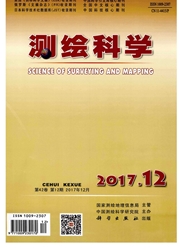

 中文摘要:
中文摘要:
针对空间插值中不同核函数在不同地形条件下的适用性问题,该文选取了平原、丘陵和山地3种地貌类型区,采用5种常用的径向基核函数分别生成若干分辨率的DEM,通过高程统计参数、空间自相关特性和等高线套合分析DEM的精度差异。综合而言,平原地区中多重对数函数、多重二次曲面函数、反多重二次曲面函数和自然三次样条曲面函数插值效果没有显著差别,薄板样条曲面函数相对略差;丘陵地区选择多重二次曲面函数和薄板样条曲面函数插值效果最好,多重对数函数和自然三次样条曲面函数次之,反多重二次曲面函数最差;山地地区采用多重二次曲面函数插值能取得较为满意的效果,其他4种核函数逊之。
 英文摘要:
英文摘要:
Aiming at the problem of the applicability of different kernel functions in different terrain conditions during spatial interpolation, three different physiognomies were selected, including plain, hills and mountain areas in this paper. DEMs with different resolutions were generated using five frequentlyused radial basis function(RBF)kernel functions. Then, three analyses(i, e. the statistical parameters of elevation, the spatial autocorrelation and the matching of contour)were adopted to identify the accuracy of DEM. The results showed that the interpolation effects of multi log function(MLF), multi quadric function(MQF), inverse multi quadric function(IMQF)and natural cubic splines function(NCSF)were not significantly different in the plain; the effect of thin plate splines function(TPSF)was relatively worse among all methods. In the hills, the interpolation effects of MLF and NCSF were better than that of IMQF but were not as good as MQF and TPSF. In the mountain, the interpolation effect of MQF was the best, and the effects of other four methods took the next place.
 同期刊论文项目
同期刊论文项目
 同项目期刊论文
同项目期刊论文
 期刊信息
期刊信息
